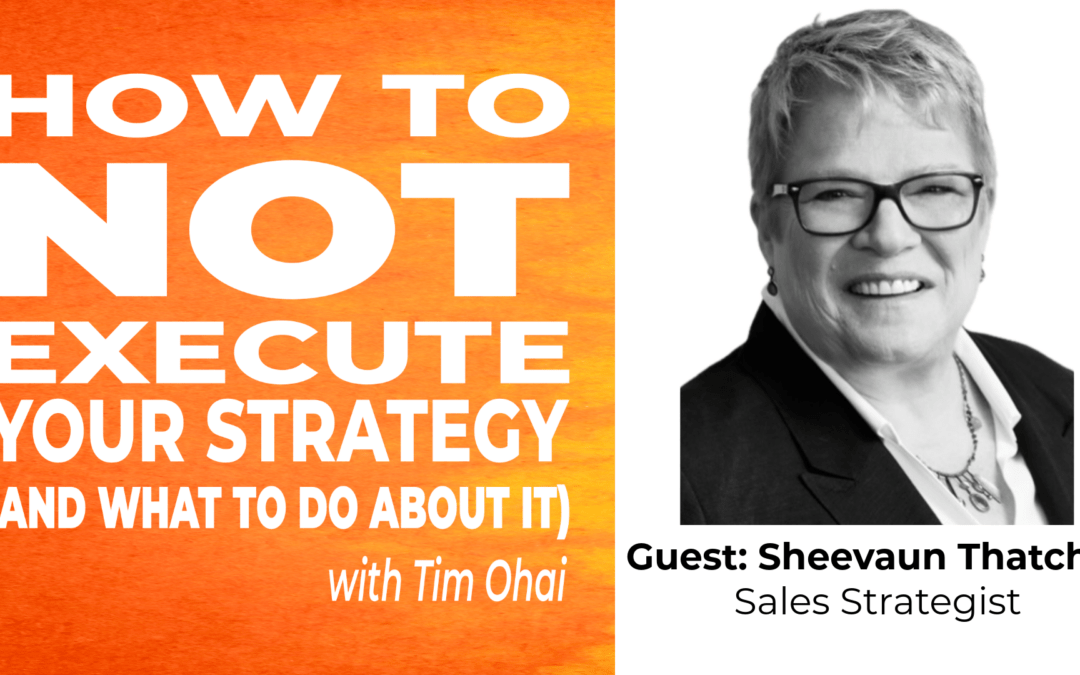How to NOT Execute Your Strategy (Episode 34): Sheevaun Thatcher
Sheevaun Thatcher is literally a legend in the world of sales enablement globally, even earning a Lifetime Achievement award from Selling Power. From a bag-carrying seller to a global presales leader – and now running her own GTM Strategic Performance consulting company (Thatcher Consulting Group) – she knows exactly what it takes to make a sales strategy come to life. In this conversation, we dig into why product-driven thinking and fear-based accountability crush sales execution – and learn what to do instead.
- Find the audio version on your favorite platform or go directly via RSS.com
- Watch this episode on Youtube
Three key concepts:
- Lead with customer insight, not product knowledge. Sales strategies break down when leaders confuse product knowledge with genuine customer value. Effective selling starts by deeply understanding customer priorities, pains, and goals—then shaping your messaging and execution to meet them where they are in their own journey.
- Drive real alignment across sales, marketing, AND leadership. Misalignment breeds waste, burnout, and disengagement. Aligning sales, marketing, and executives through frontline insights ensures your sales strategy translates clearly into customer conversations that resonate – and results that stick.
- Transform all sales leaders into coaches, not bookkeepers. When leaders fixate only on the numbers without coaching and developing their teams, performance stalls and culture suffers. Every sales leaders must be a skilled coach who can empower their sales reps with the confidence, clarity, and competence they need to win.
BONUS – Leader guide: Use the following questions for (a) self-reflection as a leader and/or (b) a great discussion with your team.
1) Listen to the full episode before this discussion.
2) Sheevaun basically explored the power of getting true alignment around both goals and roles. Would you agree that alignment is essential to executing any strategy ? Why or why not?
3) In 10 words or less, define true alignment. Share your answers.
4) What happens when alignment is lost or broken? What are the most important signs?
5) Alignment doesn’t simply happen on its own. Looking at where we have the strongest alignment with a group outside of our immediate team, what did we do to create that alignment?
6) Looking at our efforts now, is there anything that we are doing/not doing that is affects our own alignment? How about cross-functionally? What leadership advice does this generate?
7) Option: Take time right now to define exactly what following that advice looks like (the outcome(s), metrics, and requirements).
If you enjoyed this episode, please share it with at least one person. And leave me a review on whatever platform you engaged this podcast. Your feedback is invaluable to me.
Holomua. Onward and upward.
All the best ~ Tim
PS Like what you’re reading? Please share this content with a friend so they can join the community.


Recent Comments